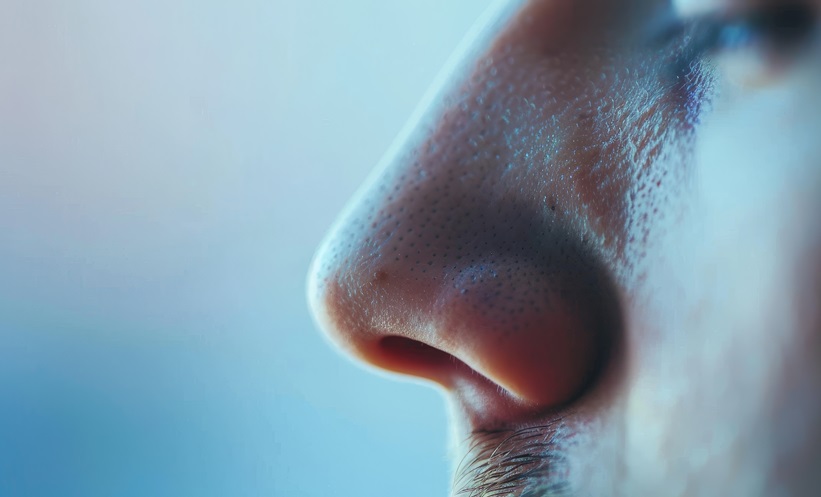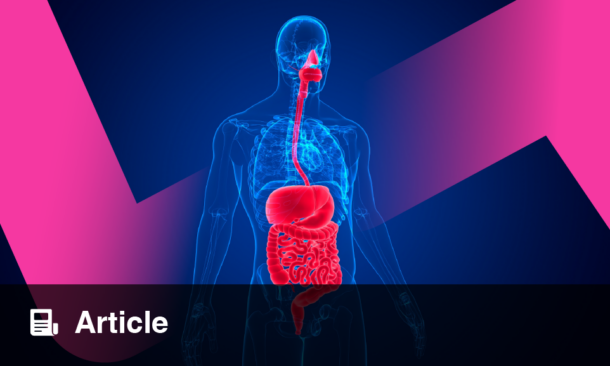Abstract
Background: Gynaecomastia is a benign enlargement of male breast tissue, often linked to disturbances in hormonal balance. Amlodipine, a calcium channel blocker widely prescribed for cardiovascular conditions, is occasionally associated with gynaecomastia, though the causal relationship is not clearly established. This report explores a unique case of amlodipine-induced gynaecomastia in a patient with spinal cord injury (SCI), a demographic that presents additional challenges due to altered neuroendocrine function and chronic inflammatory states.
Case Presentation: The authors describe a case involving a male patient in his 60s, previously treated with amlodipine following his spinal cord injury. Despite a comprehensive evaluation showing normal endocrine function and the absence of other systemic diseases, discontinuation of amlodipine led to a regression of breast enlargement, suggesting a drug-induced aetiology.
Discussion: The interplay between amlodipine’s pharmacological effects and the patient’s SCI-related physiological changes highlights a complex pathophysiological mechanism. Amlodipine may influence the hormonal balance indirectly through vascular and metabolic effects, exacerbating the tendency towards an oestrogenic environment conducive to gynaecomastia. Furthermore, SCI-related factors such as increased adiposity and reduced physical activity may enhance the aromatisation of androgens to oestrogens, further predisposing to breast tissue proliferation.
Conclusion: This case underscores the need for heightened clinical awareness when prescribing amlodipine, particularly in patients with SCI. It prompts consideration of underlying vulnerabilities and suggests a tailored approach to pharmacotherapy to mitigate the risk of adverse drug reactions, including gynaecomastia. The reversibility of symptoms upon drug withdrawal highlights the importance of monitoring and the potential for intervention in similar cases.
Key Points
1. Gynaecomastia, affecting up to 65% of men over 65 years, can be multifactorial. Identifying iatrogenic causes is crucial, especially in patients with complex conditions like spinal cord injury (SCI).2. This is a case report of a male patient in his 60s presenting with bilateral gynaecomastia, potentially linked to long-term amlodipine therapy, set against a background of neuroendocrine changes due to chronic SCI.
3. Amlodipine may exacerbate gynaecomastia through complex mechanisms in patients with SCI, necessitating heightened clinical vigilance and tailored management when prescribing and reviewing medications for this population.
INTRODUCTION
Gynaecomastia, the clinical term for the enlargement of the male breast, is characterised by the histological finding of increased proliferation of ductal tissue, stroma, or adipose tissue within the breast structure.1,2 The aetiology of gynaecomastia is multifactorial, with associations drawn to various medical conditions that disrupt the endocrine balance, such as pronounced obesity, hypogonadism, renal insufficiency, and hepatic dysfunction, each contributing to an altered hormonal profile conducive to breast tissue proliferation.
Pharmacological interventions, including spironolactone, antipsychotic agents, lipid-lowering medications, and antiandrogens, have been recurrently linked to the aetiology of gynaecomastia.3 While less frequently associated, calcium channel blockers (CCB) such as amlodipine have also been recognised as contributing factors. Employed in the management of angina pectoris and hypertension, amlodipine was dispensed over 37 million times in 2004 within the USA.4 Its utilisation among older adults is particularly judicious, given its efficacy in blood pressure modulation and its protective role against stroke and myocardial infarction, conditions that are of paramount concern within the geriatric population.5 Consequently, acknowledging the potential adverse effects of such medication, notably the risk of gynaecomastia, is imperative. Although the direct causality between amlodipine and gynaecomastia remains to be definitively proven, the existing circumstantial evidence demands a vigilant and holistic clinical strategy when managing patients on amlodipine therapy. This underscores the necessity for an interdisciplinary methodology that integrates pharmacology, endocrinology, and molecular biology to navigate the complexities of this clinical issue effectively.
Currently, there are only two case reports documenting amlodipine-induced gynaecomastia,6,7 along with a case series that includes two patients on long-term haemodialysis.8 This is the first report on amlodipine-associated gynaecomastia in a patient with spinal cord injury (SCI).
The changes intrinsic to SCI, such as possible altered neuroendocrine function and a chronic inflammatory state,9 play a pivotal role in the emergence and subsequent resolution of gynaecomastia in patients undergoing amlodipine therapy. This situation underscores the complex interactions at play, emphasising the need for a sophisticated approach to pharmacotherapy in this distinct patient group. A thorough medical management strategy, encompassing hormonal evaluation and adjustment, nutritional guidance, and physical rehabilitation, is essential to understand the risk of gynaecomastia among individuals with SCI.
CASE REPORT
A male in his 60s, with a history of SCI and hypertension presented with bilateral, symmetrical gynaecomastia. He noted that the onset of gynaecomastia coincided with the initiation of amlodipine (10 mg once daily) therapy. However, the condition became more pronounced in both size and visibility following his SCI.
His medical background includes a motor-incomplete cervical spinal cord injury that he sustained more than 10 years ago and hypertension. Other than amlodipine, which he had been taking for more than 10 years, he was also taking angiotensin-receptor blockers for his hypertension, anticholinergics for his neurogenic bladder, and laxatives for his neurogenic bowel. Lifestyle assessment indicated no significant concerns; he abstained from alcohol, anabolic steroids, marijuana, and whey protein supplements, and had no testicular problems. There were no records of liver disease, kidney disease, or endocrine issues. Family history did not reveal any cases of breast cancer or endocrine disorders.
Physical examination confirmed bilateral breast enlargement with tender glandular tissue beneath the areola, without detectable masses, lymphadenopathy, nipple discharge, or skin changes. He denied any breast tenderness. According to the Simon classification for gynaecomastia, he was categorised as Grade 2b, indicating moderate enlargement with excess skin.10
Laboratory tests covering liver and kidney function, thyroid function, and a hormonal profile were within normal ranges. Of note, testosterone levels were on the lower limit of normal.
Amlodipine was omitted during his stay, and regression in his symptoms was seen within a month of the drug suspension. Unfortunately, due to the inability to get into contact with the patient, there is no long-term follow-up data available to determine the potential for recurrence or reversibility of the condition.
DISCUSSION
Gynaecomastia is defined as the benign expansion of dense, subareolar male breast glandular tissue, spanning at least 2 cm.2,10,11 This condition arises from a multifaceted interaction of physiological, pharmacological, and pathological elements that disrupt the intricate equilibrium between oestrogenic and androgenic forces within the breast tissue.2,10,11 While typically benign, and primarily a cosmetic concern rather than one of clinical significance, gynaecomastia frequently results in distress for those affected.1 Asymptomatic gynaecomastia exhibits a distinct trimodal distribution across different age groups. Initially affecting 60–90% of neonates, this condition stems from high levels of fetal oestradiol and progesterone, influenced by maternal hormones. Additionally, the early onset is linked to increased conversion of steroid precursors into sex steroids and greater aromatisation of androgens, driven by a neonatal increase in luteinising hormone.1,2 During adolescence, 50–60% experience hormonal shifts leading to gynaecomastia as they undergo physiological changes. In early puberty, the pituitary gland’s nocturnal release of gonadotropins stimulates testosterone production by the testes. Adolescents developing gynaecomastia exhibit persistently elevated serum oestradiol levels throughout the day, in contrast to those without the condition, who have a lower androgen-to-oestrogen ratio.1,2,12
In males aged more than 65 years of age, the prevalence of gynaecomastia reaches another peak, affecting up to 65% of this population.10 While the precise mechanisms remain unclear, the increase underscores the complex interplay between ageing, diminished testosterone production, and the elevated conversion of oestrogen associated with increased body fat.
Aetiological determinants of gynaecomastia encompass pathophysiological states that precipitate elevated serum oestrogen concentrations, reduce androgenic levels, or modify the mammary gland’s hormonal receptivity. Perturbations in the endocrine landscape, exemplified by conditions such as hypogonadism, hyperthyroidism, and neoplasms with augmented secretion of human chorionic gonadotropin or oestrogens, intricately disrupt the hormonal equilibrium.1,3 Hepatic pathologies, notably cirrhosis, impair the hepatic clearance of oestrogens, whereas renal dysfunction compromises the metabolic processing and elimination of hormones.1,3 In the clinical context of this patient, these factors were meticulously evaluated and deemed non-contributory. Moreover, while adiposity is known to potentiate gynaecomastia through enhanced peripheral aromatisation of androgens within adipose depots, the authors’ patient presented with a BMI within the higher limit of normal. The role of genetic predisposition and hereditary factors, which may influence the enzymatic orchestration of steroidogenesis or the mammary gland’s sensitivity to endocrine modulation, was also considered and found to be lacking in the patient’s clinical profile.
Drug-induced gynaecomastia accounts for a minority of cases, ranging between 10–20%.13 Agents such as anti-androgens, certain antihypertensives, highly active antiretroviral therapy, and psychoactive drugs, including some antidepressants and antipsychotics, are implicated in gynaecomastia through various mechanisms, including direct oestrogenic effects, increased peripheral aromatisation, inhibition of testosterone synthesis, or prolactin elevation.3 The patient’s sole medication that might have contributed was amlodipine.
Amlodipine, a dihydropyridine CCB, modulates vascular smooth muscle contractility by selectively inhibiting L-type calcium channels, thus exerting a vasodilatory effect predominantly on peripheral arterioles, which translates into its antihypertensive and anti-anginal properties.14 The link between amlodipine and gynaecomastia, albeit not directly delineated within current literature, can be postulated through indirect pathways that alter the hormonal homeostasis, particularly the oestrogen-androgen axis, critical for maintaining mammary tissue quiescence in males.
While amlodipine itself lacks inherent hormonal activity, its long-term systemic effects could theoretically influence endocrine function indirectly.3 The vasodilatory-induced haemodynamic alterations might modulate hepatic blood flow, and consequently, the hepatic metabolism of steroids. This could disrupt the hepatic clearance of oestrogens and androgens, potentially skewing the oestrogen-to-testosterone ratio in favour of oestrogens, thus predisposing to gynaecomastia.
Moreover, research investigating the effects of long-acting CCB on the serum steroid hormones and insulin in patients who are hypertensive and obese found that these medications significantly lowered blood pressure and reduced fasting serum immunoreactive insulin and insulin resistance index within 2–3 months of treatment.14 Concurrently, there was an observed increase in serum levels of dehydroepiandrosterone (DHEA) and DHEA sulfate, although these changes did not reach statistical significance. This study elucidates a complex mechanism by which amlodipine could potentially contribute to the onset of gynaecomastia. Specifically, elevated DHEA levels, resulting from treatment, may precipitate gynaecomastia via intricate endocrine and metabolic pathways, highlighting the intricate effects of amlodipine on hormonal dynamics and metabolic processes. Primarily, the increased substrate availability for peripheral aromatisation enhances the conversion of DHEA to oestrogenic compounds, thereby tilting the oestrogen-androgen ratio in favour of oestrogenic predominance, a pivotal factor in mammary gland proliferation. This process is further compounded by the intricacies of insulin resistance, where DHEA’s role is nuanced, potentially affecting adipose tissue distribution and hormonal profile, indirectly influencing breast tissue sensitivity.1 Moreover, the augmented levels of DHEA could perturb the hypothalamic-pituitary-gonadal axis feedback loop, modulating gonadotropin secretion and thus altering gonadal steroidogenesis.14 The resultant hormonal dysregulation, characterised by an oestrogenic shift, underpins the pathogenesis of gynaecomastia.
It is also crucial to note that while elevated DHEA levels could contribute to the development of gynaecomastia, the exact outcomes are highly dependent on individual factors including metabolic status, co-morbidities, genetic predisposition, and overall hormone balance. A crucial co-morbidity in the authors’ patient’s history is SCI, which may indirectly facilitate the onset of gynaecomastia via a series of interrelated physiological mechanisms. These mechanisms predominantly involve disruptions in hormonal balance, changes in body composition, and decreased physical activity.15,16
Individuals with SCI often experience significant changes in body composition, including increased adiposity and decreased lean muscle mass.9 Adipose tissue expresses aromatase, an enzyme that converts androgens to oestrogens. An increase in body fat percentage can, therefore, lead to elevated levels of circulating oestrogens, contributing to the oestrogen-androgen imbalance that favours the development of gynaecomastia.17 Especially in the context of reduced mobility and physical activity leading to muscle atrophy and increased fat accumulation.
SCI often leads to significant changes in the neuroendocrine axis due to the disruption of the hypothalamic-pituitary-gonadal axis communication. This can result in decreased levels of gonadotropin-releasing hormone and subsequently lower luteinising hormone and follicle-stimulating hormone secretion.18-20 The reduction in luteinising hormone and follicle-stimulating hormone can lead to decreased testosterone production by the Leydig cells in the testes.20 Allison and Ditor21 outline that SCI precipitates a state of chronic inflammation and immune dysfunction, marked by elevated levels of proinflammatory cytokines, whereby this sustained inflammatory state exacerbated by secondary health complications and metabolic disorders inherent to SCI, such as atherosclerosis, obesity, and diabetes, contributes to an altered hormonal profile.9,16,21 Additionally, the altered sympathetic nervous system activity post-SCI may affect adrenal function, potentially influencing androgen and oestrogen levels.9,15,21
The resultant hormonal imbalance, skewed towards oestrogenic dominance due to factors like increased adipose tissue (a rich source of aromatase enzyme for oestrogen synthesis), compounded with reduced motor activity and metabolic alterations, creates a conducive environment for the development of gynaecomastia. Notably, males with SCI had a 3.7-fold higher prevalence of lower testosterone with an overall prevalence of 33% based on free testosterone levels.18 Other studies also found an association between SCI and testosterone deficiency,9,22-25 and in the authors’ patient, his testosterone was noted to be in the lower limits of normal. Thus, the chronic inflammatory state following SCI, coupled with the cascading effects on hormonal regulation and adipose tissue functionality, underlines a plausible pathway through which patients with SCI, particularly those on medications like amlodipine that influence vascular and adipose tissue dynamics, might develop gynaecomastia.
CONCLUSION
Amlodipine, a calcium channel blocker used for its antihypertensive and antianginal efficacy, inadvertently impacts the hormonal equilibrium, rarely but potentially instigating gynaecomastia by indirectly modifying the neuroendocrine axis or the distribution and function of adipose tissue. This pharmacological influence, coupled with the systemic disturbances induced by SCI, characterised by chronic inflammation and neuroendocrine disruptions, heightens the individual’s vulnerability to such medications. The SCI-associated shifts towards increased adiposity and reduced physical activity predispose to enhanced aromatisation of androgens into oestrogens, a process potentially accentuated by amlodipine’s effects on adipose tissue, thereby fostering an oestrogenic dominance conducive to gynaecomastia.
Moreover, the underlying chronic inflammatory state inherent to SCI, intertwined with amlodipine’s immunomodulatory actions, might catalyse glandular breast tissue proliferation. The observed reversibility of gynaecomastia upon cessation of amlodipine underscores the drug’s role in this complex interplay and underscores the critical need for clinical vigilance and personalised management in prescribing such medications to patients with SCI, taking into consideration the multifaceted systemic alterations and advocating for an integrated approach to medication management.







